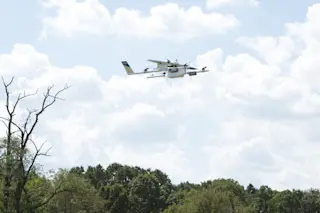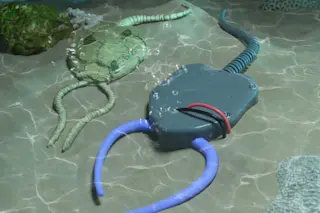A Project Wing drone belonging to the Google X labs performs a food delivery run at Virginia Tech. Credit: Google Google has been dreaming of hot pizzas and freshly-made coffee descending from the sky to your doorstep. The Google X technologies lab has already begun delivering burritos to Virginia Tech students using its Project Wing drones. But the truly bold part of the Google X plan may be the goal of offering drone food delivery for just a $6 fee. Google's delivery drone vision includes an online website called Wing Marketplace where customers could place orders with retailers and restaurants, according to the
A $6 delivery fee through Wing Marketplace would probably be competitive with the traditional delivery fees and tips for the human workers normally delivering food. The big question is how Google X aims to cover the operational costs of running a drone delivery service ...














